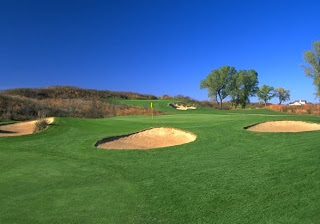1930-1940 – The End of an Era

Augusta National is built ushering in Parkland golf
The market crash of 1929 had a massive impact on golf, particularly in North America. This was a major turn of events where 600 courses would close and only 200 would be built over the next 30 years. Most architects fell on to hard times with many having to retreat to other professions to survive.
Interestingly the world faired much better than the United States. The British Isles had an average of forty new courses built each year and many great courses like Royal Birkdale, Turnberry, and Ballybunion went through major transitions during this time. Charles Alison built Hirono and his pupil Kinya Fujita built a series of great Japanese courses. Stanley Thompson may have had less work in Canada but built a series of courses throughout South America all while building Capilano and Highland Links. Things had slowed down but course construction was still reasonably strong.
Pinehurst #2 goes through a major change in bunkering and regrassing the greens
It was the United States that was really hurt by the depression. In the US, Robert Trent Jones had an ominous beginning when his first golf course Midvale had to declare bankruptcy upon opening. Even Donald Ross was forced to retreat back to Pinehurst and but fortunately for all of us began to rework most of the courses including the fabled #2 course to make improvements from turf through to the architecture. Much of what is admired from playing characteristics through to green contours on the #2 course came from this period when the bunkers were rebuilt, the greens raised up with an additional layer of sand and Bermuda grass was established on the greens.
Prarie Dunes is built which became the influence for Sand Hills
The busiest architect was the mid-west designer Perry Maxwell who was working with many communities that had money because of the oil industry mainly. He was brought in to design both Southern Hills and Prairie Dunes which became important layouts. Maxwell also worked in partnership with Mackenzie to get courses like Crystal Downs through to completion. Maxwell’s architecture featured some of the most clever interior green contours the game has seen. He also had the ability to blur the line between architecture and nature at Prairie Dunes, so that the course blends marvelously in with the prairie environment. His site sensitive design style and reliance on contours in the land and contours on the greens would eventually be emulated by the minimalist movement to come. Maxwell would also end up rebuilding a few greens at a little course in Georgia.
Augusta National may not be the best course in golf, but it certainly is the most well known. At one point I would have said the most influential too, but Augusta is marching currently completely out of step with the rest of golf. Augusta National was Bobby Jones dream course (designed with Alister Mackenzie) based upon the playing styles, options and freedom found on the Old Course at St. Andrew’s. I have an old article from before construction that describes many of the holes like the 4th as based upon the Eden hole and even talks about the original concept employing a Redan! The course features dramatic fairway contours, water hazards, winding creeks, tree-lined fairways and high flashed bunkers that essential set the standard for what is considered the American Parkland golf course. It was even set up with the spectator in mind, another idea that resurfaces again down the road.
Next Entry: http://thecaddyshack.blogspot.com/2007/03/1940-1950-war-years.html


3 comments:
Ian,
Which decade do you think yielded the greatest courses thus far?
B
Ben,
Until I began, I would have automatically said the 1920 - 1930 decade was the run away best period in golf. I'm beginning to question that assumption, since the 1910 - 1920 decade delivered such excellence. So that's my pick...1910 - 1920.
Ian
Really helpful data, lots of thanks for the post.
Post a Comment